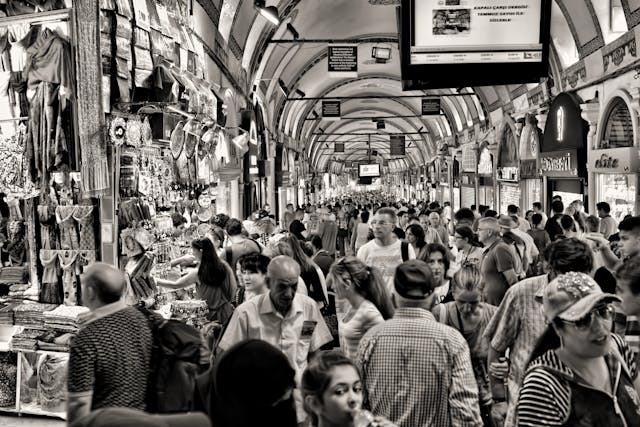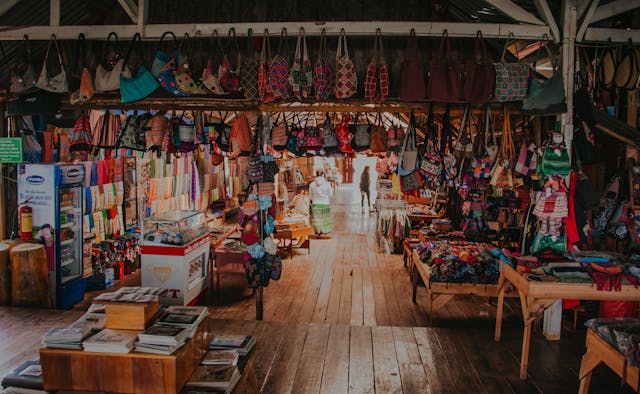Shopping Abroad: Tips for Navigating Foreign Markets and Boutiques
Shopping abroad offers a unique experience—whether it's finding one-of-a-kind souvenirs, exploring local craftsmanship, or hunting for fashion bargains. However, shopping in foreign countries can also present challenges, from language barriers to unfamiliar payment systems. To make the most of your international shopping experience, it's important to be prepared. This article provides practical tips for navigating foreign markets and boutiques with confidence.

Research Before You Go
Understand Local Shopping Customs
Before heading out on a shopping spree in a foreign country, take some time to research the local shopping customs. Different countries have varying expectations when it comes to bargaining, tipping, and interacting with shopkeepers. For example, in some markets, haggling is expected and even encouraged, while in others, prices are fixed and non-negotiable. Understanding these practices will help you avoid cultural misunderstandings and ensure that you shop in a way that is respectful and appropriate.
Know the Local Currency
Familiarize yourself with the exchange rate before shopping abroad. This will help you estimate the cost of items and make informed decisions about what you're willing to spend. Many countries also have their own unique currency, so it’s important to have some cash on hand or a currency exchange app for easy conversions.
Shop at Local Markets for Authentic Souvenirs
Explore Street Markets and Flea Markets
When traveling abroad, local markets are often the best places to find authentic, handmade goods that you won’t find in chain stores. Street markets, flea markets, and open-air bazaars provide a wide range of items, from traditional crafts to fresh produce and clothing. These markets allow you to immerse yourself in the local culture while also discovering unique treasures.
Know What to Buy
Different regions are known for specific products. For example, Italy is famous for leather goods, India for textiles and jewelry, and Morocco for spices and rugs. Research the specialties of the region you’re visiting to help you choose authentic, high-quality items that reflect the local craftsmanship.
Bargaining Tips
In many countries, bargaining is part of the shopping experience. Start by offering a price lower than what the vendor asks, but don’t go too low. Be polite and friendly, and be prepared to walk away if the price doesn’t meet your expectations. Often, vendors will call you back with a better deal if you’re willing to negotiate.
Navigating Boutiques and High-End Stores
Look for Local Designers and Unique Pieces
Boutiques and high-end stores are great places to shop for unique fashion and accessories that reflect the local style. Many boutiques feature local designers who offer clothing and accessories not available elsewhere. When shopping at these stores, try to buy something that stands out as a reminder of the country’s fashion trends or craftsmanship.
Consider Size Differences
Be aware that sizing may vary between countries. For instance, European sizes are typically different from U.S. sizes, and Asian sizes can run smaller. Check sizing charts or try on items before purchasing to avoid disappointment.
Ask About Local Materials and Craftsmanship
When shopping in boutiques, don’t hesitate to ask the staff about the materials and craftsmanship behind the products. Local artisans often use traditional techniques that may be unfamiliar to you. By learning about the history and story behind the items, you can make more informed purchasing decisions and take home a piece of the culture.
Keep an Eye on Local Regulations and Customs
Be Aware of Import Restrictions
Some countries have restrictions on what you can bring back home, especially when it comes to food, plants, and animal products. Before making a purchase, check the customs regulations of your home country to ensure that you won’t run into issues when you return. For example, certain textiles, plants, or souvenirs made from endangered species may be prohibited from import.
Tax-Free Shopping
In many countries, visitors can claim a refund on Value Added Tax (VAT) or sales tax for purchases made at participating stores. Look for signs or ask the store staff if they offer tax-free shopping, and be sure to keep your receipts. You’ll need to complete a tax refund form, and sometimes show your passport, at the airport before you leave the country to receive your refund.
Be Mindful of Payment Methods and Currency Exchange
Use a Credit Card or International Payment App
While cash is still widely accepted in many parts of the world, credit cards and mobile payment apps like Apple Pay, Google Pay, and local options (like Alipay in China) are becoming more common in stores, especially in urban areas. Ensure your credit card is accepted internationally, and check for foreign transaction fees before using it.
Carry Some Local Cash
Despite the rise of digital payments, there are still places where cash is preferred, particularly in smaller towns, markets, or remote areas. It’s wise to carry some local currency for purchases, especially in situations where card payments may not be possible. Be mindful of exchange rates when withdrawing cash from ATMs abroad to avoid unfavorable fees.
Avoid Unfavorable Currency Exchange
If you need to exchange money, try to avoid currency exchange booths at airports or tourist hotspots, as they often offer poor exchange rates. Instead, use local ATMs for better rates or exchange money at reputable banks. Always be cautious of hidden fees and check the rates before making transactions.

Protect Your Purchases and Keep Track of Expenses
Pack Wisely for Shopping
When shopping abroad, especially in markets or boutique stores, you may accumulate a lot of purchases. Make sure to pack efficiently so that you can safely transport your new items home without damage. Consider purchasing protective packaging from stores if needed, and avoid overpacking to leave room for your new finds.
Track Your Spending
Shopping abroad can quickly add up, so it’s a good idea to keep track of your purchases. Consider using a budgeting app or a simple note on your phone to monitor your spending, ensuring you don’t exceed your budget.
Conclusion: Enjoying Your Global Shopping Experience
Shopping abroad is an exciting way to experience different cultures and bring home unique items that remind you of your travels. By doing a little research, being mindful of local customs, and navigating payment systems carefully, you can make the most of your shopping experience without stress. From bustling markets to chic boutiques, each destination offers something special—whether it’s a handmade souvenir, a trendy fashion item, or a delicious treat. With these tips, you'll be well-prepared to explore the world of international shopping and find treasures that will last a lifetime.












